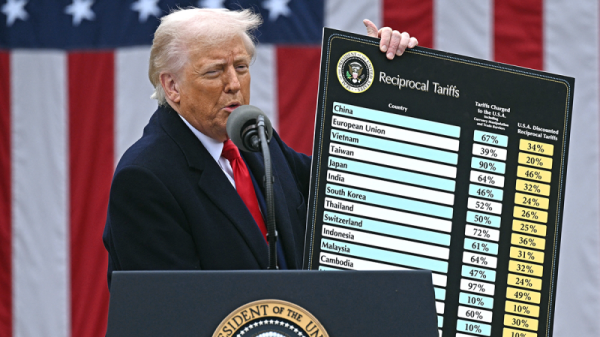How to Calculate Lot Size: Mastering Forex Money Management
Key Takeaways:
Knowing all the essentials about lot size is essential for managing risk and optimizing profits in forex trading.
Lot size depends on account size, risk tolerance, currency pair, and stop loss level.
Forex brokers offer various lot sizes, including standard, mini, micro, and nano lots.
Traders can use tools provided by brokers or calculate lot size manually using the formula.
Leverage enables traders to fully control larger positions with smaller amounts of capital.
Have you ever thought about how to calculate lot size as a true professional? Understanding lot size is significant for traders across various trading accounts in contemporary trading.
Determining lot size directly impacts account balance and potential profits when buying or selling currency pairs like EUR/USD.
With nano lots and advanced trading platforms, it’s important to calculate the correct lot size for successful trading accurately.
This guide offers new trading ideas for small amounts. It explains currency pairs and how they impact account balances in modern trading.
But what does lot represent in Forex mean? Let’s get all the information, shall we?
What is a lot in Forex trading?
In the realm of forex trading, lots epitomize predetermined volumes of currency units one either purchases or trades off. Consider lots akin to standardized gauges for transaction volumes. When you carry out trades on your trading interface, they’re generally denoted in these lot magnitudes.
Picture lots as akin to procuring eggs in a carton or crate. A carton contains 12 eggs, whereas a conventional forex lot typically encompasses 100,000 currency units.
Various dimensions of lots exist: diminutive (10,000 units), minute (1,000 units), and minuscule (100 units) in currency exchange.
This principle holds significance within the trading realm and is subject to variation based on particular circumstances. Grasping this concept enables traders to mitigate risk and effectively enhance opportunities for financial gain.
Lot Sizes:
Standard: 100,000
Mini: 10,000
Micro: 1,000
Nano: 100
Broker Calculations
Brokers may use varying methods to calculate pip values based on lot size. They’ll provide the necessary details for the currency pair you’re trading. They handle all computations, adjusting pip values as the market fluctuates.
Example
In certain instances, a lot may signify a set quantity of units denominated in the base currency. Alternatively, lot size denotes the number of shares involved in a singular trade transaction in different contexts.
This parameter can fluctuate depending on the underlying asset being traded and the specific exchange where the transaction occurs.
How to calculate lot size in Forex?
If you’re interested in understanding how to calculate lot size as a true Forex trading professional, here’s what you need to note:
Calculating lot size is vital for traders in the forex market to control their risk and position size effectively.
It depends on a few factors. One factor is how much money they have. Another factor is how much risk they can handle.
Another factor is which currencies they’re trading. And finally, how okay they are with losing money is also a factor.
How to calculate the Forex lot size?
To figure out the lot size:
Assess Account Size: Start by knowing how much money you have in your trading account. Typically, traders risk only 1-2% of their account on each trade to safeguard against significant losses.
Determine Risk Tolerance: Consider how much risk you will take on each trade. This helps you decide how much you’re comfortable risking in pursuit of potential profits.
Understand Currency Pair: Each currency pair involves trading units of the base currency. Understanding this relationship is crucial for calculating lot size accurately.
Set Stop Loss: Establish the level at which you’ll exit the trade if the market moves unfavourably. This stop-loss level is essential for managing risk and limiting potential losses.
Use trading platform tools to calculate lot size: The calculation is based on account size, risk tolerance, stop loss level, and standard sizes in the forex market.
Traders can use these steps to determine the right lot size for their risk tolerance and trading strategy. This helps them trade Forex more effectively.
The formula for calculating lot size
Lot Size = (Risk Amount / (Stop Loss in pips * Pip Value)).
Example of how to calculate lot size:
Here’s how to calculate lot size in an example:
Account Size: $5,000
Risk per Trade: 0.5%
Stop Loss: 25 pips
Currency Pair: EUR/USD
Price per Pip: $5
To calculate the lot size:
Calculate Risk Amount: $5,000 * 0.5% = $25
Calculate Position Size in Units of Base Currency: $25 / 25 pips = $1 per Pip
Determine Lot Size: $1 / $5 = 0.2 standard lots
In this example, with an account size of $5,000 and a 0.5% risk per trade, the lot size to risk 0.5% of the account with a 25-pip stop loss on EUR/USD, where each Pip is worth $5 is 0.2 standard lots.
How to decide the correct lot size?
Determining the correct lot size for trading involves considering factors such as tick sizes, contract sizes, and volatility levels specific to each instrument.
In Forex, standard lots consist of 100,000 units of the base currency, but mini lots (10,000 units) and micro lots (1,000 units) are available for traders with smaller capital.
For stocks, lot sizes vary based on the exchange and specific contract, with one standard lot in the US stock market typically comprising 100 shares.
In futures and commodities trading, lot sizes can fluctuate depending on the contract and underlying asset, with volatility significantly determining the appropriate lot size.
Utilizing a lot size calculator simplifies this process, aiding traders in managing risk and maximizing profit potential across different instruments.
What is leverage?
Leverage allows small investors to control large sums in forex trading. Picture your broker as a bank lending you $100,000 to buy currencies while you only need to deposit $1,000.
This system, using leverage, lets you trade without needing the full amount upfront. Your broker sets the margin required per trade, and your comfort level determines the leverage you utilize.
Conclusion
Mastering the lot size calculation is fundamental for successful forex money management.
Traders can determine appropriate lot sizes that align with their trading strategies by considering account size, risk tolerance, currency pair dynamics, and stop loss levels. Utilizing leverage effectively can further enhance trading opportunities while managing capital efficiently.
The post How to Calculate Lot Size: Mastering Forex Money Management appeared first on FinanceBrokerage.


































